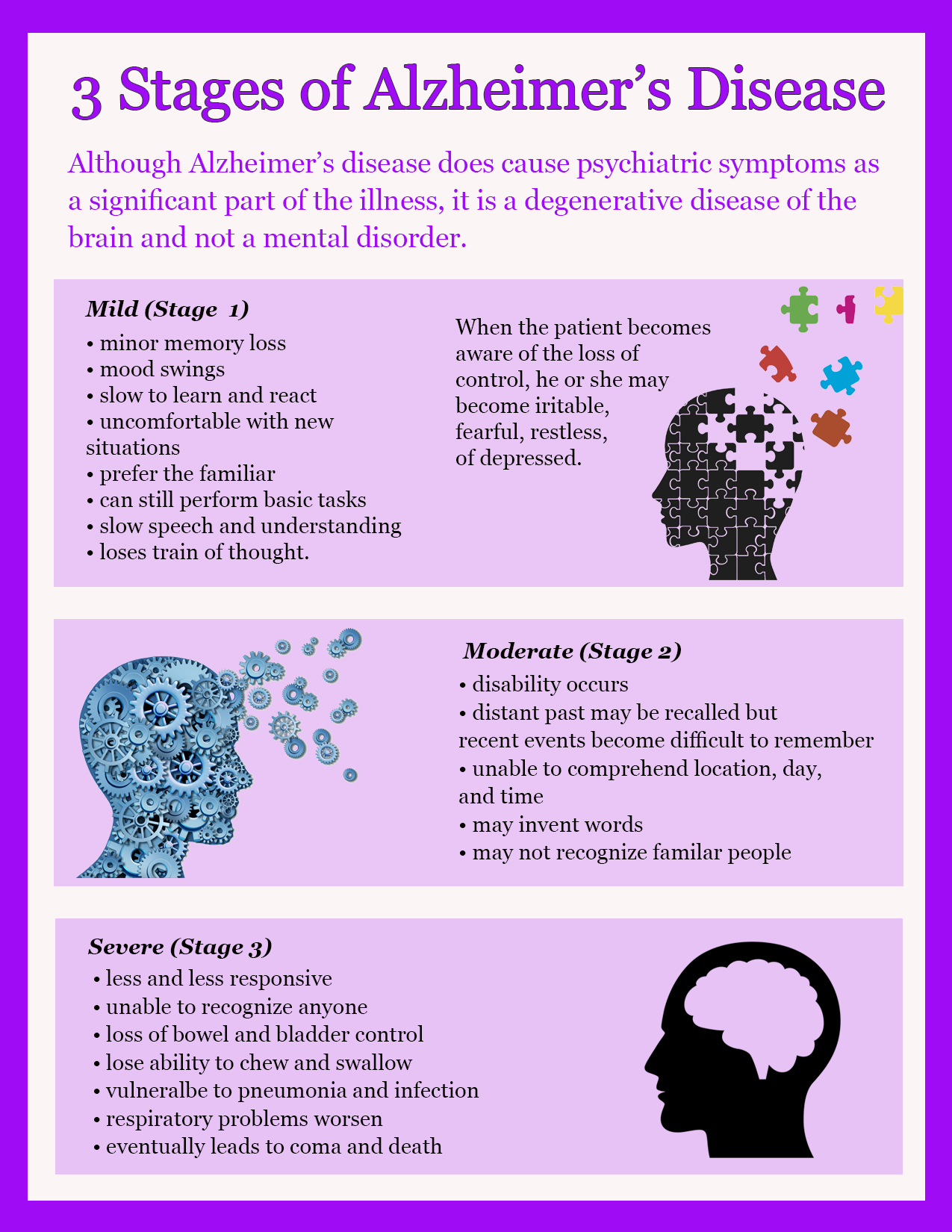
A Man’s Guide to Outliving a Woman: What to do in Each Decade of Life
December 18, 2024Childhood Obesity and How to Avoid It
December 18, 2024By Susannah Wollman
Alzheimer’s disease continues its progress across an aging population in the United States. While medical science can help us live longer, we are seeing new problems as we age. So what’s new on the research front? Here’s what we’ve learned about Alzheimer’s disease.

More than three decades
Research into the devastating effects of Alzheimer’s disease for more than three decades has not produced much in the way of treating those with the disorder. Steven Clarke—a professor with a distinguished 30-year career in the biochemistry of the brain as it applies to Alzheimer’s—said in a study done at UCLA, “Nothing has worked. We’re ready for new ideas.”

New Progress
New insights recently reported by Clarke and his colleagues at UCLA may lead to new ways of fighting the devastating disease. In the journal Nature Communications, the UCLA team reports that amyloid fibrils—elongated structures resembling ropes—contain proteins that make them interlock like the teeth of a zipper. These harmful structures are present not only in Alzheimer’s but Parkinson’s and two dozen other degenerative diseases. And they may have been there since birth.
The most common cause of dementia among older people, Alzheimer’s disease is a permanent, progressive brain disorder. It kills brain cells, gradually destroying memory. It also affects thinking, behavior and the ability to carry out even simple, daily tasks. In America, researchers and doctors believe that more than 5.5 million people have dementia thought to be caused by Alzheimer’s. Most of the sufferers are over age 65.
Now the UCLA team says that the small protein beta-amyloid may have a normal version that is less harmful and an age-damaged version that is detrimental to the brain. A graduate student at UCLA (who has since become the lead author in the article in Nature Communications), Rebeccah Warmack discovered a second molecular zipper. As the fibril is sealed and zipped up, the water that proteins live in gets pushed out. Warmack and colleagues David Boyer, Chih-Te Zee, and Logan Richards (graduate students), together with research scientists Michael Sawaya and Duilio Cascio, worked together on the team.
What goes wrong?
Like a string of beads on a necklace, beta amyloid’s most common form can spontaneously form a kink on the 23rd amino acid. The kink can be compared to a kink in a garden hose. The stronger, second molecular zipper appears when the amyloid becomes kinked.
“Now we know a second water-free zipper can form and is extremely difficult to pry apart,” Warmack said. “We don’t know how to break the zipper.”
Research shows that the normal form of beta-amyloid has six water molecules that keep “the hose” running, but if a kink forms, these water molecules are ejected, allowing zippers to form.
“Rebeccah has shown this kink leads to faster growth of the fibrils that have been linked to Alzheimer’s disease,” said Clarke. “This second molecular zipper is double trouble. Once it’s zipped, it’s zipped, and once the formation of fibrils starts, it looks like you can’t stop it. The kinked form initiates a dangerous cascade of events that we believe can result in Alzheimer’s disease.” It’s possible, says Clarke, that the kinks form throughout our lives. However, there is a “protein-repair” enzyme that fixes these problems.
“As we get older, maybe the repair enzyme misses the repair once or twice,” he said. “The repair enzyme might be 99.9% effective, but over 60 years or more, the kinks eventually build up. If not repaired or if degraded in time, the kink can spread to virtually every neuron and can do tremendous damage.”
Knowing that might seem unhelpful to the person suffering from Alzheimer’s and the people who care for that person. Clarke says, “The good news is that knowing what the problem is, we can think about ways to solve it. This kinked amino acid is where we want to look.”

More than mere forgetfulness
Forgetting where you put your keys or not remembering someone’s name is not Alzheimer’s disease. It’s more likely caused by a too-busy life that is so common in Western society. But if you are concerned it’s not simple forgetfulness, see your doctor.
Alzheimer’s disease does much more than give someone memory problems (although that happens even in the early stage of the disease). It is a progressive, incurable, and degenerative brain disorder that leads to death in anywhere from 2 to 20 years. In fact, Alzheimer’s disease is the sixth leading cause of death in the US, and some newer studies show it may be as high as third. More than 5 million people in the US suffer from the disorder. By the end of 2019, another 500,000 will likely be diagnosed as having the brain disorder.
It is difficult to diagnose, but there are protocols for coming to the conclusion that someone has the disease. It is noteworthy that not everyone is affected in the same way by Alzheimer’s. The following graphic illustrates the three stages of the disease. These stages follow the predictable path the disorder typically takes.
___
Resources
University of California, Los Angeles
Journal Reference:
Rebeccah A. Warmack, David R. Boyer, Chih-Te Zee, Logan S. Richards, Michael R. Sawaya, Duilio Cascio, Tamir Gonen, David S. Eisenberg, Steven G. Clarke. Structure of amyloid-β (20-34) with Alzheimer’s-associated isomerization at Asp23 reveals a distinct protofilament interface. Nature Communications, 2019; 10 (1) DOI: 10.1038/s41467-019-11183-z
University of California – Los Angeles. “Biochemists discover new insights into what may go awry in brains of Alzheimer’s patients.” ScienceDaily. www.sciencedaily.com/releases/2019/08/190819164346.htm (accessed October 30, 2019).
Understanding Alzheimer’s Disease, Bright Focus Foundation

For more information and resources about Alzheimer’s Disease and Dementia please visit the Alzheimer’s Association.


